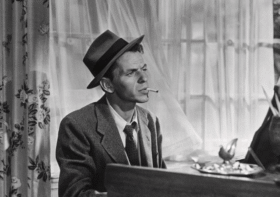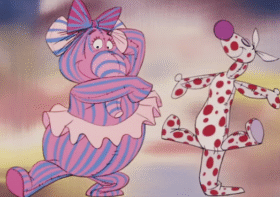Rules To Keep/Discard
There is an old chestnut attributed to Picasso that seems to get bandied about when discussing anything that has “rules” whether it’s painting, dressing, writing, brewing, goat herding, what have you: “Learn the rules like a professional so you can break them like an artist”.
Can we pump the brakes a little, please? Yes, I like clothes as much as the next internet weirdo, but I don’t consider getting dressed an act of artistry. This is exactly the kind of junk that keeps well meaning guys from thinking they can ever pull off looking halfway decent because of all the “rules” and when to “just break the rules like an artist, man!”. Hopefully this article will shed some light on the silly things we shouldn’t spend time worrying about.
When I first started realizing how important it was to dress well, I remember feeling intimidated by how many rules there were! Don’t wear this with that! Only wear this at a specific time! And on and on. It seemed like the purchase of one item necessitated an avalanche of additional purchases in order to stay on the right side of style law. Surely not all of the rules have to be followed to the letter all the time, right? Are some of them more like suggestions? I turned to the internet but online forums/articles were very little help. Sure, there were a plethora of sites that recited what the rules were and why they were rules in the first place, but I couldn’t find a practical guide on which rules I should keep and which I could discard (none with any real detail, that is). Hopefully I can provide you with the information I lacked early on gleaned from years of trial, error and general practice. I’ll tackle some of the major “Rules” of menswear (in no particular order) and break down whether or not they should be followed and if so, how rigidly.
Match Your Leathers: I list this and “match your metals” right out of the gate for reason. I don’t want you to spend any more money than you have to and if you follow these rules too rigidly, you will be buying shoes, belts and watches left and right all in a vain attempt to get them all to match. When it comes to matching your leathers, all you need to do is match the color of your shoes to the color of your belt. That’s it. Black shoes? Wear a black belt. If your shoes are brown, find a belt in the same general color family. What you don’t need to do is match the colors exactly (which is something I tried in vain to do early on in my journey). You don’t need the browns to match exactly because brown is inherently casual and no one expects you to be able to perfectly match different pieces of dyed leather that came from different manufacturers and different cows anyway. Trying to do so is pointless. Also, don’t worry if you have some sort of unusual color shoe. You don’t have to buy another belt just to match it. Sand colored suede shoe? Or a navy shoe? Or a burgundy shoe? Your mid-brown dress belt you wear with everything else will look perfectly fine. Dressing is fun but we need to be careful not to cross over into fastidiousness. Attempting to perfectly match your leather in all circumstances will drive you nuts and waste your money. Black is black, though, so you shouldn’t have any trouble with that.
“What about watches?” You ask. “The rule says I need to wear a black strapped watch when I wear black shoes/belt and a brown strapped watch with brown shoes/belt”. I’ll admit that this was a little difficult for me to come around to because I followed it religiously for so long. You do NOT need to match your watch leather to your belt/shoes. If you own a handful of watches and have the ability to match them, that’s fine. But most men don’t. Back in the day most men only had one watch that they wore with everything. It’s a watch, not a handbag. You don’t have to coordinate it with your shoes. So if you have a watch with a brown strap and gold case go right ahead and wear it with your charcoal suit, black shoes, and black belt and don’t give it a second thought. Take a look at Georges Guetary in An American In Paris. He wears a brown strapped watch with black shoes and he looks like a million bucks (francs?).
So remember, all you need to do is match your belt to your shoes as best you can. That’s all.
Match Metals: This is usually listed in the same breath as “match your leathers” and it just means that if you have gold or silver somewhere on your person then all other metal (watch case, belt buckle, cuff links) should be the same type of metal. Honestly, there isn’t any real reason to follow this one. Sorry. This “rule” can go right in the pail. Look at it practically: I put on a black belt with a silver buckle. Does that mean I can’t wear my gold watch? What if my wedding ring is gold? Do I now need a belt with a gold buckle (to go with my gold watch)? And what if I only have one watch. Does that mean I can never wear silver cufflinks? How far down the rabbit hole should we go? If we follow this rule we need a belt with a silver buckle, a belt with a gold buckle, gold cufflinks, silver cufflinks, gold case watch, silver case watch…. What if we wanted to wear a tie bar? Two of those, too? Should we differentiate between yellow gold and rose gold? What about the silver buckles on my shoes?! But my blazer has gold buttons! Should I buy a second wedding ring?! Good grief. It feels like this rule was concocted by people who don’t actually wear clothes.
Bottom line, wear whatever color metals you want and go about your day.
Bottom Button On Jacket Stays Undone – Yup, keep this one. Cary Grant gets away with only buttoning his bottom jacket button in a handful of his movies (Monkey Business, Suspicion)… but he’s Cary Grant and you’re not. Also, JFK routinely buttoned his bottom jacket button. Rumor is that it was to hide a back brace due to injuries sustained in WWII. But… he’s JFK and you’re not.
Socks Match Trousers – This is a rule because the color of the socks should provide a clean visual path from your trousers down to your shoes, so they should ideally match your trousers. Again, this was one I followed way too closely in the beginning… so closely that I was holding up pairs of socks against trousers I was about to buy to make sure I had a perfect match. Tan trousers, tan socks. Light grey trousers with LIGHT grey socks (dark grey socks in this instance?! Perish the thought!). Even burgundy socks with burgundy trousers. I used to own LOTS of socks. Anyway, there wasn’t really anything WRONG with what I was doing, but I ended up buying a few pairs of every color of sock under the sun. And I was missing a fundamental aspect of dressing well: ease. I was so new to menswear that I wasn’t yet comfortable in my own style. I didn’t yet know how to dress well without following the rules as rigidly as I could. I didn’t understand at that time, that I could wear burgundy socks with my grey trousers, for example, and it would look just fine (side note: Burgundy socks go with pretty much everything).
So the bottom line on this rule is this: If you’re wearing a suit in either a navy or charcoal, black socks are all you need. But if you’re feeling ambitious, then feel free to don navy or charcoal socks. If you’re wearing odd trousers, you can wear anything from tan, olive, burgundy, navy, brown and they will all look perfectly acceptable as long as the socks are in the same relative lightness or darkness as your trousers and shoes. For example, you can wear tan trousers and olive socks, or grey trousers and burgundy socks, or brown trousers and navy socks, etc. The reason you should adhere to the rule more rigidly when it comes to suits is because you still want to make sure that visual line from your trousers to your shoes goes uninterrupted as much as possible. A sock that is much lighter in shade than the trousers and shoes is going to make people look immediately at your feet, which isn’t something you necessarily want.
Shirt Hem Tucked/Untucked – This rule says that if your shirt has “shirt tail” hem than you should tuck it in. If it’s a straight hem you should leave it untucked. Usually, this makes sense and you should abide by it, but of course, there are some exceptions I will lay out for you. Dress shirts on the formal side of things (spread collar, poplin weave, etc) should always be tucked in. Period. Shirts that lean more casually like an OCBD can be untucked in very casual situations (at the beach, bumming around the house) or if the cut of the shirt permits it. If it’s a slim fit shirt with a shorter hem that falls just past your waist and it’s in a more casual weave or cloth like an oxford or linen, then you can leave it untucked provided you aren’t wearing other formal clothing, like a jacket. Don’t worry about flannel shirts. They are so casual no one will care whether you tuck it or not. Straight hem shirts can be left untucked all the time, however, if you wanted to tuck it in no one would know. It just might come untucked a little more easily. I find straight hem shirts useful when travelling, since I can wear them casually untucked but then tuck them in and throw on a jacket in the evening. Saves space in my luggage.
Pocket Square Should Not Perfectly Match Your Tie – This one is correct. The tie and pocket square shouldn’t look like you bought them in a set (just like your shoe leather and belt shouldn’t look like a set). Ideally, the square should reflect the tie in some way (paisley with a splash of navy to reflect the navy tie you’re wearing, for instance). But don’t overthink it too much. After a while you’ll start to instinctively know what looks “right” and “not quite right”. Trust those instincts because other people with see the same thing. If you’re ever in doubt, a plain white square goes with everything. If you’re wearing a very loud jacket like a madras, it’s fine to forgo the square entirely.
Ties – Thin Blade Should Be Shorter Than Wide – In movies and TV shows, if they want to signal to the audience that a character is incompetent, they will show him struggling to tie a tie properly. Or if they want him to be sloppy, they will have the thin blade of his tie longer than the wide blade. However, anyone who wears a tie with any regularity knows that the length of the blades of a tie vary from day to day. Some ties of mine knot magically in the same place every time, but some ties need a couple tries before the balance is somewhat correct. And that’s the operative word: “somewhat”. Don’t strive for perfection. You’ll make yourself crazy. Ties have varying lengths and varying thicknesses. Also, my trousers don’t all sit at the exact same place on my body. So it would be impossible for my tie to always be knotted perfectly and fall at the correct spot. I have a beautiful navy grenadine tie that I love, but in order for me to get a reasonably good sized knot, I need to have the narrow blade hang slightly lower than the wide blade. This is fine because my jacket covers it. But even if it didn’t it would be fine too! I don’t have the time to re-tie my tie a million times in the morning (and I am sure you don’t either). We dads are busy and time is at a premium. Tie your tie once or twice as needed and then go ahead with your day. Now, there are some super sprezzy IG dudes out there who purposely tie their ties with the thin blade longer than the wide blade in order to achieve some sort of “lewk”, but I don’t understand that. Just seems like trying too hard.
Denim On Denim – This “rule” simply instructs that you shouldn’t wear a denim shirt or jacket with denim pants (ie the dreaded “Canadian Tuxedo”) especially if the shades of denim are similar. This rule sounds pretty reasonable until you unpack it a little. There have been plenty of times when I was already dressed and ready to toss on my denim jacket when I realized the mid/dark wash of my jacket was somewhat similar to the jeans I already had on. You know what I did? I put on the denim jacket anyway and walked out the door. Do you really expect me to worry about the varying shades of the denim I’m wearing? Am I supposed to hold my jeans up against my jacket to make sure there is sufficient contrast before I put them on? We fathers don’t have time for that nonsense. Now, does it look BETTER when your pants are a different color or cloth/weave than your denim shirt or jacket? Yes. But denim pants and denim shirts/jackets are ultra casual anyway. I presume you’re wearing them to undertake some sort of casual or rough and tumble activity. In those circumstances don’t worry about offending the style police.
Northern Lights – This rule states that your jacket should not be lighter than your trousers. I hope none of you have actually heard of this “rule”. It is moronic but unfortunately you will find spots on the internet where people chide others for unwittingly breaking it. Because of this, early on I thought I had offended some sartorial deity when I unwittingly wore a tan jacket with navy trousers. I thought everyone was laughing at me. Surprise: they weren’t. As you can probably guess, you do not have to abide by this “rule”. Not one little bit. Think about it practically: Many types of jackets are light in color. Camel hair, seersucker, cream linen, not to mention light blues, tans, etc. And they are all classics that will never go out of style. Of course you can wear darker trousers with them. What else would you wear? Unfortunately this is one of those odd rules that gained traction due to the internet. Look at old pictures or old movies and you will see plenty of very stylish dudes wearing light jackets and dark pants. Yes, we all know that navy jackets look great with tan or grey trousers. But if you’re wearing a camel hair sport coat (or some other light colored jacket) you can go right ahead and wear dark brown or navy trousers. The “Northern Lights” rule only exists on the internet (and the internet is full of weirdos).
Fit Is King – Yes, fit is the most important thing and your expensive suit will look like garbage if it doesn’t fit right. This is obvious. The important thing here is not to get bogged down in the minutiae of getting the fit exact. When I first started out, I was obsessed with getting the absolute perfect fit of everything I wore, not realizing one simple fact: It’s never perfect. It might be “perfect” one minute, but then you take a step, or sit down, or move in any way, or you gain or lose weight and you discover little bits here and there that could be “better”. The sleeves could be ½ a millimeter shorter to show the perfect amount of shirt cuff! The trousers could be let out slightly more to provide the perfect amount of drape! It will drive you crazy unless you relax a little. Because you know what? Not all of your clothes will fit you exactly the same way. Different brands, different cuts, different tailors. Just make sure you get the fit as close to perfect as you can and then let it go. All of my suits and sport coats fit a little bit differently and I am ok with that. Some are roomier than others. Some are slimmer. They all “fit”. Just a little differently. And that’s fine. I have more important things to do than worry too much about getting my fits exact.
Hopefully, these points will help you avoid some of the early pitfalls I experienced. Always remember that, when it comes to dressing well, a little bit of effort goes a very long way. Sure, you will probably unwittingly break some “rules” here and there. But life is short. This isn’t a dress rehearsal. Live your life and enjoy your clothes.



